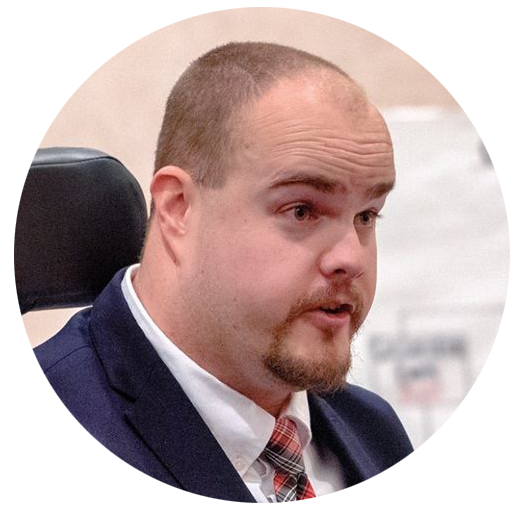
Image adapted from Wikicommons by DhLeaks44 / CC BY-SA 4.0
Two Tracks for Twelve Steps: Rehabilitation and Religious Liberty in Criminal Sentencing
Matthew P. Cavedon
Right before Christmas 2019, a Canadian man won a settlement after his bosses made him attend Alcoholics Anonymous. Why? The man is an atheist, while the world-famous recovery program’s twelve steps require participants to turn their will and lives “over to the care of God,” “believe that a Power greater than [them] could restore [them] to sanity,” “admit to God . . . the exact nature of [their] wrongs,” ask God to amend their lives, and seek “to improve . . . conscious contact with God.”
Controversies like this also arise frequently in the context of American criminal law. Since at least the mid-1990s, courts have regularly sentenced convicted drug and alcohol abusers to probation with conditions including attendance at twelve-step meetings like Alcoholics Anonymous and Narcotics Anonymous. Lawsuits have accompanied this trend. In 2007, a California atheist received a $2 million settlement after being forced to attend twelve-step meetings. One survey found nearly two dozen cases weighing in on whether the First Amendment’s Religion Clauses let judges mandate twelve-step attendance.
The majority of such cases allow such sentences unless challengers show: “(1) that the program is religious; (2) that if they do not attend the program they will either (a) lose some benefit they are otherwise entitled to or (b) be subject to some detriment or punishment; and (3) that there is no secular alternative available.” The first two prongs are hardly ever contested. Several of the steps defining these programs include religious surrender. And by definition, someone who declines to attend a twelve-step meeting incorporated into a criminal sentence will suffer legal consequences. But where the government provides secular alternatives alongside twelve-step meetings, the third prong dooms most constitutional claims, because the First Amendment ordinarily protects against government coercion into religious activity. Where a convict is given the choice of religious and secular rehab options, those who choose religious ones are not coerced.
I have written elsewhere in this series about the value of two-track government approaches to religion, in which the government leans into the religious beliefs of those who have them while respecting the non-belief of those who do not. For instance, the purpose of swearing-in court witnesses is to bind their consciences. Only a religious oath taps into the deepest part of many religious people’s consciences. And only a secular alternative does so for many non-believers and conscientious objectors to oaths. Government best achieves its goal of activating witnesses’ consciences when it takes into account the religion of the religious, and the non-religion of the non-religious.
That is equally true when it comes to rehabilitating addicts. Twelve-step meetings have nearly a century-long record of helping tens of millions of people worldwide. No small part of their success is their spiritual focus. Even 30 years before Alcoholics Anonymous began, the famous psychologist and scholar of religion William James marveled at the power of religious conversion to work “the complete abolition of an ancient appetite” for intoxication. Plenty of modern people, too, believe that God exists and is someone an addict can “turn to for help.” Still others may not personally be religious, but still describe finding in twelve-step meetings a “sensation of peace, of God entering in through the ceiling.” Given twelve-step meetings’ power to change lives, it would be absurd and ineffective for the government to deny itself their help – not to mention disrespectful of those who benefit from having a religious dimension to their rehabilitation.
But the same desire to connect rehab to the highest centers of personal integrity is also a great reason not to force non-religious people to go. At the very least, a non-religious person “may have to do some internal mental gymnastics” to get through a twelve-step program. That could certainly divert mental and emotional energy away from the struggle against addiction. At worst, compelling people to attend meetings whose fundamental beliefs they do not share sets up scenes like what happened in 2015 in Ontario’s Alcoholics Anonymous community: A non-religious member sued alleging discrimination after an atheist was accused of “sending people out to die” upon sharing his skepticism that there exists any deity who can aid in sobriety.
Focusing on whether someone is being coerced to attend twelve-step meetings is the right question for the courts. Government has to respect beliefs and nonbelief in order to both achieve its goals and respect people’s rights. Letting people select the option best suited to their convictions is both sound policy and required by religious liberty.
A similar path has been marked out in a setting with which readers might be more familiar: school choice. School attendance and rehabilitative criminal sentences have three key characteristics in common. Both are backed by government mandates. Both concern the shaping of minds and behavior. And in both, religious people often benefit greatly from religious content that non-religious people do not want.
How do courts strike the balance in the context of education? In basically the same way as with twelve-step meetings. One of the marquee school choice cases is Zelman v. Simmons-Harris. There, the U.S. Supreme Court upheld a school choice program that gave parents tuition aid, which they could then spend on either secular or religious schools. The Court upheld this, finding that “where a government aid program is neutral with respect to religion, and provides assistance directly to a broad class of citizens who, in turn, direct government aid to religious schools wholly as a result of their own genuine and independent private choice,” the First Amendment is satisfied. Any circuit between government coercion and religious practice is “broken” by the choice of the parents, who freely decide what kind of school to support.
As with the education of schoolchildren, so with the behavioral reeducation of addicts. Respecting people’s freedom to choose just how religious their rehab is serves government interests and personal liberty alike. ♦

Matthew P. Cavedon is a criminal defense attorney in Gainesville, GA. He graduated from Emory University in 2015 with a law degree and masters of theological studies.
Recommended Citation
Cavedon, Matthew P. “Two Tracks for Twelve Steps: Rehabilitation and Religious Liberty in Criminal Sentencing.” Canopy Forum, August 28, 2020. https://canopyforum.org/2020/08/28/two-tracks-for-twelve-steps-rehabilitation-and-religious-liberty-in-criminal-sentencing/


